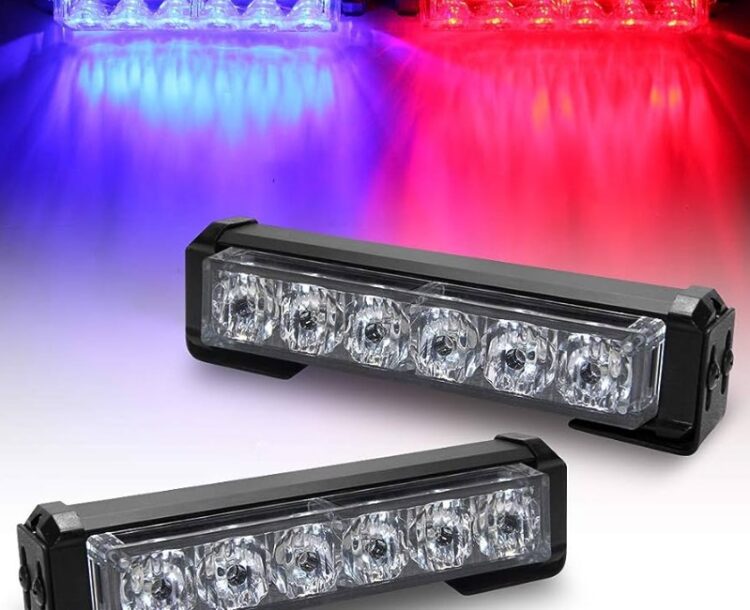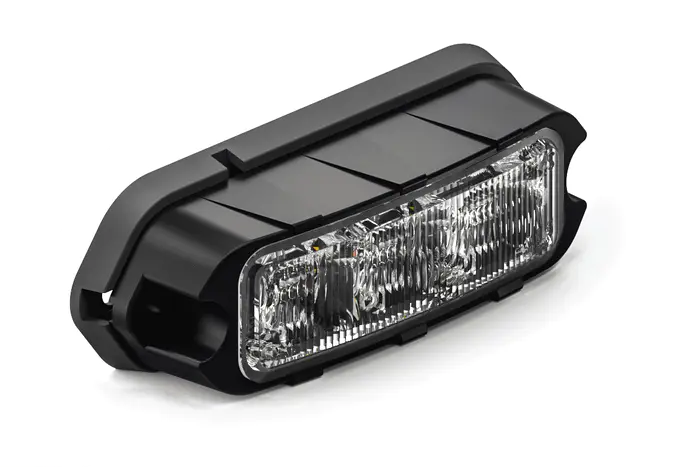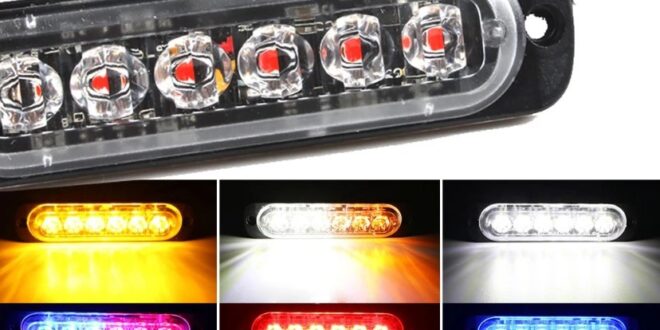Are you concerned about your emergency vehicle’s visibility on the road, especially during high-stakes situations? Let’s address that issue.
This article will unveil how synchronized flasher modules can substantially enhance road safety and give you peace of mind.
1. Understanding Synchronized Flasher Modules
Synchronized flasher modules are intricate devices, often found in emergency vehicle lights, that control the rhythmic flashing of warning lights. They ensure the lighting pattern remains synchronized, creating a harmonious spectacle of illumination.
What makes them tick? They function by interpreting electrical input signals, and converting these into well-timed pulses. These pulses then command the connected lights, instigating a dance of brilliance that’s difficult to ignore.
Now, ponder the range of emergency vehicles – from ambulances and fire trucks to police cruisers and roadside assistance vans. They all share a common mission – to respond quickly, effectively, and safely to emergencies. In each of these vehicles, synchronized flasher modules play a significant role, enhancing their visibility and in turn, safety.

2. Enhanced Visibility Increases Road Safety
Consider a foggy dawn or a dusky twilight swallowed by a sudden downpour. Amid this shroud, imagine discerning a rhythmically pulsating light cutting through the dim. It’s an emergency vehicle, announced by a symphony of synchronized flashes. This vision underscores the gravitas of visibility.
Synchronized flasher modules provide these vehicles with a visibility boost. This visibility is vital in high-pressure situations, a beckoning beacon for motorists to clear the way.
For emergency vehicle operators, it’s a signal for right-of-way. For other road users, it’s a clear cue to yield. This improved visibility lends a layer of predictability and safety to an otherwise chaotic situation.
So, on the road, seeing and being seen is the mantra. And in this regard, synchronized flasher modules play a critical role, facilitating safer, harmonious navigation for all.

3. Reducing the Risk of Accidents and Collisions
Let’s consider the truth of our complex world: accidents happen. Yet, this understanding doesn’t dampen our pursuit of minimizing such occurrences. In emergency vehicles, this pursuit leads us to synchronized flasher modules.
These devices employ a captivating symphony of light to draw the human eye, much like a lighthouse guides ships in stormy seas. This immediate visual pull that synchronized, flashing lights possess? It catalyzes quicker recognition and, as a result, quicker reactions from drivers sharing the road.
Imagine the scene – you’re cruising down the freeway, music blaring, when suddenly, a staccato of lights burst into your visual field. Instinctively, your foot eases off the accelerator, your hands tighten on the wheel, and your eyes scan for the source. That’s an emergency vehicle approaching, and your swift reaction potentially averts a collision.
We might not have the power to stop accidents altogether, but with synchronized flasher modules, we have an effective tool that can drastically reduce their likelihood. Thus, these devices aren’t just about producing a stunning spectacle of light; they’re about fostering safer roads. After all, isn’t prevention better than cure?

4. Improving Response Times
Time – in the world of emergency response, it’s a resource more precious than gold. Each tick of the second hand could mark the difference between life and death, order and chaos. Here, synchronized flasher modules shine, literally and figuratively, contributing to improved response times.
With their rhythmic, mesmerizing display, these modules clearly indicate an emergency vehicle’s presence. They alert other road users, facilitating quicker acknowledgment and, in turn, faster right-of-way yield.
By enabling more efficient navigation through traffic, synchronized flasher modules can shave off critical seconds from response times. And when emergencies hang in the balance of seconds, each one saved is a victory. It’s not just about getting to the scene more quickly; it’s about saving lives, preventing further damage, and restoring order faster – the true value these modules bring.

5. Promoting Efficient Traffic Management
Let’s consider another dimension where synchronized flasher modules show their merit – traffic management during emergencies. As if conducting an unspoken dialogue with drivers, these modules effectively direct the ebb and flow of traffic.
The symphony of synchronized flashing lights is hard to miss or ignore. It’s a signal that resonates with motorists, compelling them to react – yield, give way, and create a clear path. A shift in lanes here, a pause in movement there; the domino effect of actions creates a safe corridor for the emergency vehicle to traverse.
Through such an exchange, the modules help mold driver behavior. They paint a clear picture, guiding motorists to the appropriate action, effectively orchestrating the dance of vehicles on the road.
But it’s not just about the here and now. The flasher modules help create a longer-lasting imprint on drivers, instilling in them an awareness, a reflex, that kicks in every time they spot the distinctive light pattern in the future.
Therefore, synchronized flasher modules don’t just promote efficient traffic management at the moment; they also foster a culture of conscious and courteous driving. The road, after all, is a shared space.
Our roads, ever bustling with activity, can sometimes descend into chaos. Amid this chaos, we have a tool that promises order, safety, and efficiency – the synchronized flasher module. Harnessing its power can be a significant stride toward safer roads, quicker emergency responses, towards a better-shared road experience.
 Hi Boox Popular Magazine 2024
Hi Boox Popular Magazine 2024



